This article was co-authored by Lauren Urban, LCSW. Lauren Urban is a licensed psychotherapist in Brooklyn, New York, with over 13 years of therapy experience working with children, families, couples, and individuals. She received her Masters in Social Work from Hunter College in 2006, and specializes in working with the LGBTQIA community and with clients in recovery or considering recovery for drug and alcohol use.
This article has been viewed 36,151 times.
Society is constantly bombarding us with messages that we're not enough, and that can lead to body dysmorphic disorder, or BDD. When you have BDD, negative messages about your body can consume your thoughts and interfere with your life. Oftentimes, BDD is triggered or worsened by outside messages you receive about your body. We'll help you recognize BDD so you can get help or support your loved one.
Steps
Recognizing the Behaviors of BDD
-
1Watch how this person behaves around mirrors. With BDD, a person feels extremely self-conscious about a specific part of their body. They get consumed with these thoughts, wondering if people notice, trying to come up with ways to get rid of it, and beating themselves up over how defective they feel. This leads to serious self-esteem and self-confidence issues. Because of these feelings, you'll likely find them displaying one of two behaviors:
- They look at the body part over and over and over. They may carry a mirror with them or not be able to pass a mirror without stopping and staring at their reflection. If they can, they'll stare at the body part directly. Each time they do, they'll get more and more disgusted as the frustration naturally increases every time they look at it. Despite this frustration, they can't not look at it. They keep checking to see if it's still there, confirming their fears.
- They avoid looking at the body part. Some people with BDD, on the other hand, have to avoid mirrors completely or have to cover up the body part so they don't see it. If they are presented with the body part they're unhappy with, they may lose control of their emotions, panic, and withdraw.
- Whether they're looking into mirrors constantly or they can't look into them at all, this ultimately decreases their self-esteem and confidence. Wherever they go, whoever they're with, they're thinking about this aspect of their appearance, wondering if other people are thinking about it, too, or wondering if they're succeeding in hiding it.
-
2Pay attention to how they hide their "defect." If your loved one has BDD, you'll see them sitting in awkward positions, caking on make-up, or wearing specific clothing to mask whatever they can. If you watch them, you may see them fussing with their positioning, checking their makeup, or adjusting their clothing to make sure the defect is hidden. They will do everything possible to prevent its exposure to themselves or to others.
- This person you're concerned about likely feels as if they are being judged at all times on the basis of their physical appearance. If no one is around to judge them, they'll do the judging themselves. This leads them to hiding this part of their body as much as possible and in all situations.
- For instance, a lot of people wear a cap be it day or night, inside or outside, because they are insecure about the lack of hair on their heads. Some girls wear long and loose tops as they are conscious of their butts. While this is normal behavior, an individual with BDD cannot resist succumbing to the need to hide what worries them and will be incredibly distressed if forced not to.
Advertisement -
3Notice a decrease in their sociability. If this person in your life has a hard time accepting their body, they probably tend to isolate themselves so no one can see them. Regardless of the situation, they'll want to stay somewhere there are fewer chances of exposing it to someone. For most, that place is home. Your relationship will likely suffer (not to mention their relationship with others) and, while they're not housebound, you'll notice them taking on reclusive tendencies more and more.
- Those with BDD usually fear rejection because they feel those around them have legitimate grounds to do it – that one hated body part. Because of this intense fear of rejection, they don't bother making an effort with others, convinced it will lead nowhere.
-
4Encourage them to have real-life relationships. Those with BDD and other similar issues often look to online dating in order to have a relationship. These individuals lack confidence in themselves to actually go out and look for a partner; they're afraid to make themselves vulnerable and put that body part they despise in the spotlight. They are much more comfortable through calls or online sources of interaction, able to hide behind a screen. Online dating is just a way to avoid real life interactions but yet still enjoy a relationship at the same time. Unfortunately, no relationship is stable, long-term, and fulfilling when it's behind a screen.
- If you can, help them be social. Spend time with them in a tight-knit group of friends they may feel comfortable around. Try to slowly but surely introduce them to people that are trustworthy and non-judgmental.
- A lot of times people completely disguise themselves over the Internet because they believe no one will love them. When they eventually find someone they really like, they think revealing their true identity to them would force that person to leave them immediately as the reality might not be that pretty. This leads to web of lies that the person with BDD can't help but weave. If you suspect your loved one is doing this, try talking to them about it calmly and reassuringly from a perspective of understanding. They may open up to you and come clean.
Recognizing the Emotions of BDD
-
1Know that their worry can be about anything. A person with BDD may worry about their thin hair, pimples, hips, body shape, nose shape, eyes structure, wrinkles, or their complexion, either too pale, too dark, too freckly, or too pink. They may consider their face to be disproportional or asymmetrical. It could be about body odor, excessive facial hair – in other words, anything.
- The preoccupation is usually specific, i.e. based on only one body part. But it can be vague, too. The person might think that some part of their body is deteriorating and is going to become worse, or could be obsessed with something that affects their entire body, like hair or moles.
-
2Notice if they seem disengaged. Because this person hates their body so much, they may end up detaching themselves from the situation and from who they really are just to deal with it. They may try to ignore any kind of confrontation with their mind to avoid thinking about the issue at all. This is a defense mechanism that their mind is using to deal with the pain. However, when relied on too heavily it can cause neuroses, leading to further mental issues.
- Every time they look at their body, feelings of grievance arise, eventually affecting the stability of their mind. They try to ignore it and ignore it as there is still a part of them that doesn't want to feel this. It protects their ego, but the problem is still there.
-
3Know just how badly they want this body part gone. Sometimes the hatred of this part of their body is so bad that they just want it gone, whatever the cost. They feel like they can't be normal or wanted with that part attached to them, and they find it easy to start blaming their everyday failures on that part – all adding up to them wanting that part gone completely.
- For instance, a woman who has a slight shudder in her leg might have the desire to completely amputate the whole leg and consider using a fake leg. A boy may deliberately cut his penis because he does not like to be with girls in a sexual way. These cases are, of course, of extreme body dysmorphics.
-
4Help them resist the urge to hurt themselves. With BDD, this person will likely feel that their skin is a burden. They'll want to get rid of it, but the devastating fact is that they cannot. As a result, they often feel the urge to hurt themselves. Help them try to resist this and realize it's just their BDD talking. Hurting themselves won't make the pain go away.
- This is done to punish themselves because they think they have a bad body that deserves to be hurt. Each person does it differently. Some scratch their arms, others bite the skin under their nails, while others even get tattoos in an attempt to beautify their bodies.
-
5See how these feelings affect every area of their life. With BDD, this person will intensely obsess about their appearance and think about it for hours a day, from when they wake up to when they go to sleep. This obsession is disabling and makes it difficult to perform routine life functions normally. Continuously thinking about this perceived flaw makes concentrating on other aspects of life virtually impossible.
- The preoccupation with the perceived defect causes significant impairment in all areas of life, from social and occupational to home life. They don't go out with friends, their work suffers because they can't focus, and at home, they spend their free time obsessing over the body part, trying to find someway to get rid of it.
- If the BDD has progressed so far as to be debilitating, this is grounds for treatment. If you're close to this person, nudge them in the direction of therapy. While being self-conscious is a very human problem to have, BDD can be dangerous and life-threatening if left untreated.
Recognizing BDD and Other Disorders
-
1Resist the urge to diagnose them. Body dysmorphic disorder shares many symptoms with other psychological disorders. Because of this similarity, it is often misdiagnosed or ignored. If you want to self-assess your loved one's symptoms, first pay attention to the aforementioned associated features. After that, look for a differential diagnosis given below to identify and distinguish between BDD and other associated or related disorders.
- You have to pay attention to the analogy and dissimilarities between BDD and other disorders, especially depression. Sometimes one is mistaken for another and sometimes they go hand in hand.
-
2Recognize the difference between BDD and insecurity. In today's world, virtually no one is totally happy with their body. Girls start dieting as pre-teens and boys are taught to workout to gain muscle as soon as they can throw a ball. In order to distinguish if this person has BDD versus a general unhappiness with part of their body, make sure they have most of the symptoms below:[1]
- Frequent checking of defect, either directly or in mirrors
- Severe scrutiny of defect using magnifiers, special lights
- Excessive grooming behavior, make up etc.
- May avoid mirrors altogether
- Frequent changing of clothes
- Requests for reassurance about defects
- Reassurances increase anxiety
- Comparison with others
- Camouflaging of defect
- Delusional thoughts about defected body part
- Fear of defected body part being in danger
- Fear of being mocked by others
- Social isolation
- Marital difficulties
- Suicidal ideation
- May receive several surgical treatments
- May apply self-surgery
-
3Know that BDD can lead to Obsessive Compulsive Disorder. This disorder, commonly known as OCD, is a psychological disorder that is likely to develop due to body dysmorphic disorder. Here's how it manifests:
- Being extra conscious about the body provokes anxiety. The feeling of having something undesirable always attached to you makes you think about it more than normal – that's the obsession. The compulsion then, is to hide it. This is an urge that a person with BDD and OCD cannot stop.
- Obsessions are persistent ideas, thoughts or feelings that are repeated again and again in order to relieve anxiety, but yet causes significant distress. This person finds themselves thinking the same idea for hours. However, they're likely aware that this thought or idea is the creation of their own mind and is not imposed by the outside world.
- For instance, a person who does not like his hands might keep his hands closed at all times or a person might keep looking in the mirror again and again as discussed previously.
-
4Know how BDD comes into play with anxiety disorders. A person with an anxiety disorder shows restlessness, is easily fatigued, irritable, has muscle tension, and doesn't sleep well. They worry about routine life circumstances, finance, and health of family members, misfortune for family and have even minor, trivial concerns. Their focus of worry shifts from one problem to other. They may often tremble, shake, or have muscular pains. BDD is less generalized and does not shift.
- The person with dysmorphophobia also shows persistent anxiety that may cause disturbed sleep. However, their focus of worry is the part of their body which is defected, according to their false perceptions. No other area of life is given such concern.
- To differentiate the two, think about what they seem to worry about. Are the worries limited to this aspect of their appearance? If they have these physical symptoms and your answer to that question is yes, they may have BDD. However, if their worry is more general, it may point to an anxiety disorder.
-
5See how Social Anxiety Disorder is related. In BDD, avoiding social situations is similar to the behavior of some people with social anxiety disorder. It's easy to mistake the two, but here are the differences:
- In social anxiety disorder, it's common to experience red face or blushing, shortness of breath, nausea, trembling or shaking, and a racing heart. With this disorder, the individual fears that others will judge them to be crazy, stupid or awkward. They'll try to avoid social situations as they fear being embarrassed for their trembling body or shaking hands.[2]
- While in BDD, the person is not worried about their performance or the coming event. They just want to hide their perceived defects from others and therefore avoid social situations. They will not feel nausea and do not tremble. They won't find difficulty in speaking. They just don't want to be noticed for their "ugliness."
-
6Recognize BDD versus depression. In western society, girls are taught since birth to be smart and keep a slender body, which can sometimes be unhealthy and unreasonable. When they grow up, the peer pressure increases the demand for becoming attractive. Consequently they feel depressed and over conscious about their outlook. This can very easily lead to depression, be it chronic or episodic.
- People with BDD are often misdiagnosed as having depression alone. If you can, ask your loved one why they feel depressed. Analyze your thoughts about the reason behind their depression. If the reason seems to be only their physical appearance, they may be suffering from BDD.
-
7Know that BDD and depression can go hand in hand. Unfortunately, depression and BDD often are comorbid with each other. In this circumstance, the situation can get pretty serious as suicidal attempts may occur. They feel so deeply that this defect in their body isn't fixable and, therefore, nothing can be done to make them feel any better. The only way is out.
- Ask them what makes you feel hopeless. What do they feel about themselves? The world? If they have negative ideas about the world and are disappointed by their life, including their looks, then they may have BDD along with depression.
- While in depression, the individual feels their present, past and future is worthless. They have negative feelings about themselves and about the world, but are not concerned about their appearance or what others think about them. None of that matters because the world is so bleak. They may be aggressive or violent to let go of the aggravation and frustration you feel in the world.
-
8Realize how BDD relates to eating disorders. As mentioned earlier, people with body dysmorphic disorder feel unsatisfied with their body appearance. Unfortunately, the same is the case with eating disorders like anorexia nervosa and bulimia nervosa. Excessive exercising occurs in both disorders. But in eating disorders, this exercising is aimed at losing weight only.
- A person with an eating disorder worries about weight and the shape of their overall body, while a person with BDD is disturbed about a specific body part. With BDD alone, they are not worried about losing weight to look perfect.
- With an eating disorder like bulimia or anorexia, they'll be excessively conscious about their body weight. Either they eat too little or vomit the food after eating it to avoid gaining weight.
- With BDD, they might undergo plastic surgery to improve the shape of a certain part of the body. They are not interested in losing weight by taking laxatives, dieting, inducing vomiting or starving.
Expert Q&A
-
QuestionWhat can you do to help overcome body dysmorphia?
 Lauren Urban, LCSWLauren Urban is a licensed psychotherapist in Brooklyn, New York, with over 13 years of therapy experience working with children, families, couples, and individuals. She received her Masters in Social Work from Hunter College in 2006, and specializes in working with the LGBTQIA community and with clients in recovery or considering recovery for drug and alcohol use.
Lauren Urban, LCSWLauren Urban is a licensed psychotherapist in Brooklyn, New York, with over 13 years of therapy experience working with children, families, couples, and individuals. She received her Masters in Social Work from Hunter College in 2006, and specializes in working with the LGBTQIA community and with clients in recovery or considering recovery for drug and alcohol use.
Licensed Psychotherapist Try journaling about the things you love about your body and yourself. For instance, what does your body allow you to do? How are you strong? What's a feature that you love about your body? Is there anything that feels good for you to do? What are your strengths as a person? Also, ground yourself in the present moment (and in your body) by focusing on your senses and being in the here-and-now.
Try journaling about the things you love about your body and yourself. For instance, what does your body allow you to do? How are you strong? What's a feature that you love about your body? Is there anything that feels good for you to do? What are your strengths as a person? Also, ground yourself in the present moment (and in your body) by focusing on your senses and being in the here-and-now.
References
- ↑ http://www.adaa.org/understanding-anxiety/related-illnesses/other-related-conditions/body-dysmorphic-disorder-bdd
- ↑ http://www.mayoclinic.org/diseases-conditions/body-dysmorphic-disorder/basics/symptoms/con-20029953
- Comer, J. R. (2008). “Abnormal psychology”. (7th Ed.) Princeton University Press, pp.518-523.
- Allen, Francis. “Diagnostic and Statistical Manual of Mental Disorders”. (4th Ed.), American Psychological Association, 1990.pp. 507-511.
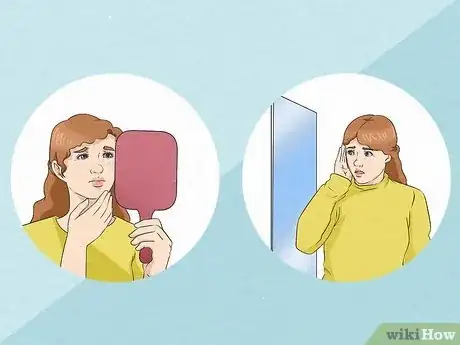
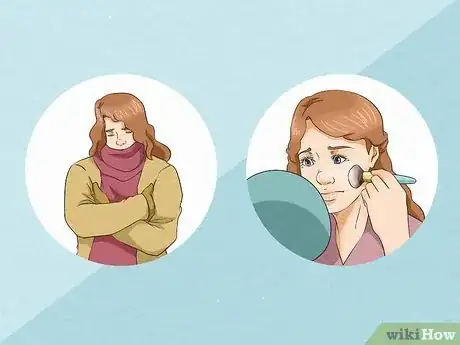
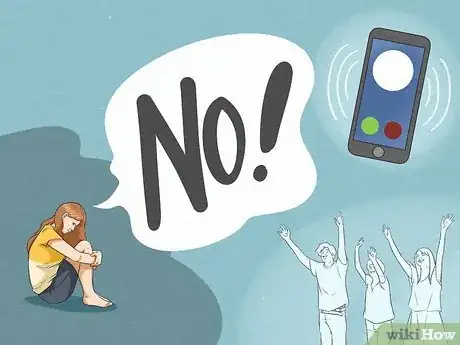

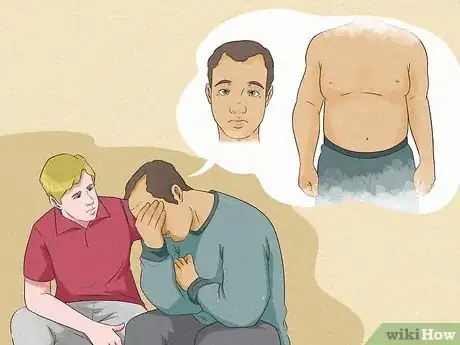
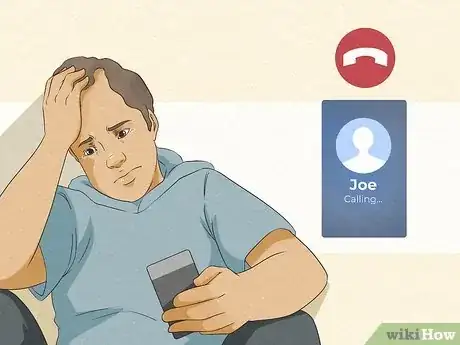
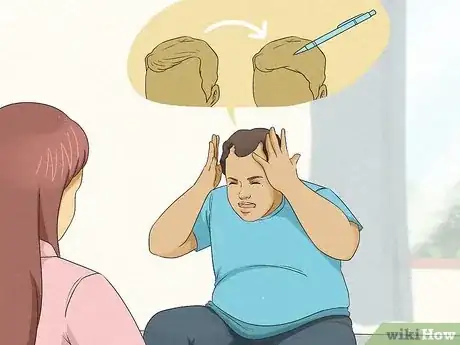
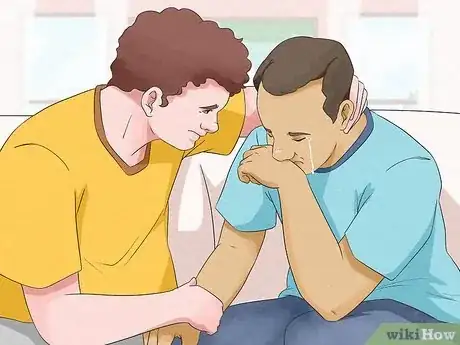
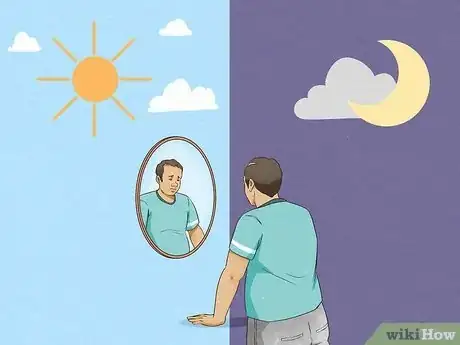
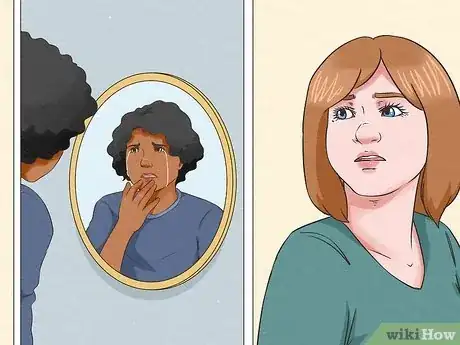
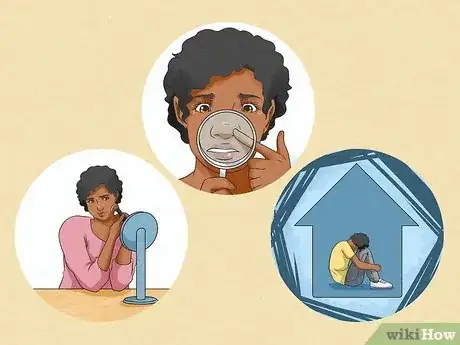
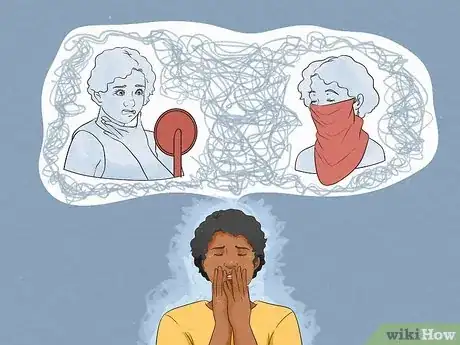
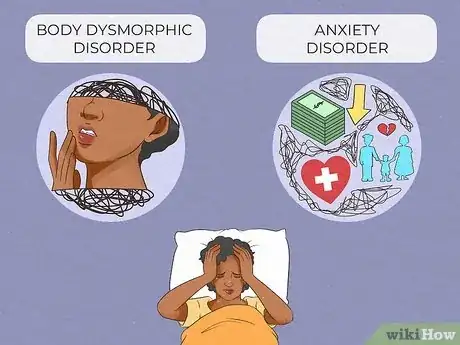

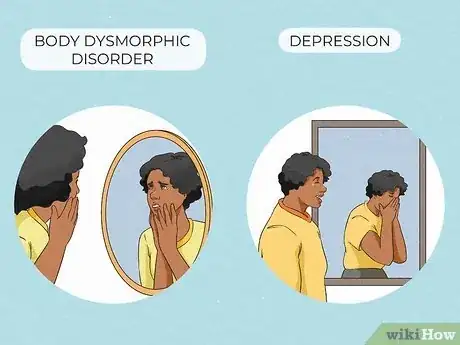
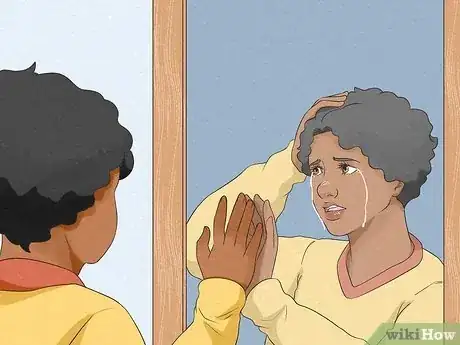
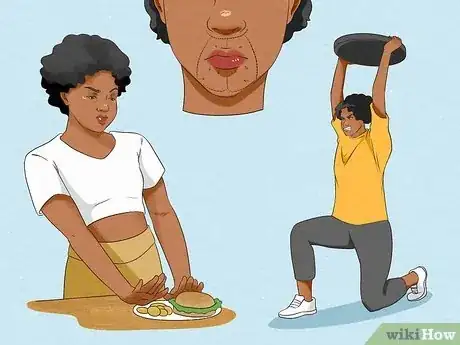




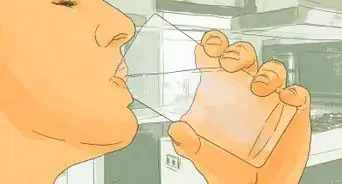


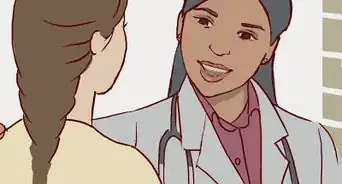
-Step-17-Version-2.webp)
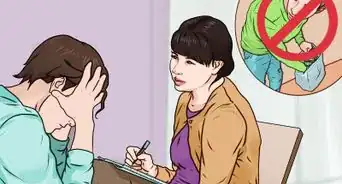


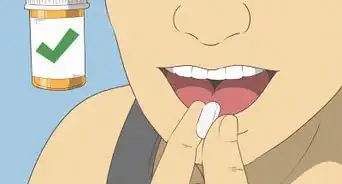
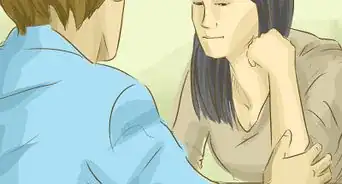















































Medical Disclaimer
The content of this article is not intended to be a substitute for professional medical advice, examination, diagnosis, or treatment. You should always contact your doctor or other qualified healthcare professional before starting, changing, or stopping any kind of health treatment.
Read More...